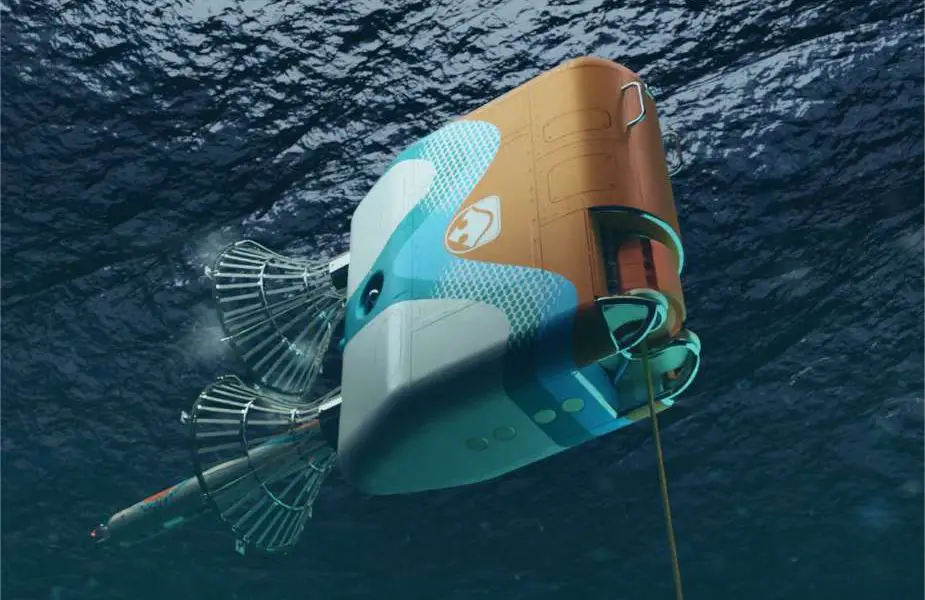Breaking News
Exclusive: Rubin From Russia Unveils Revolutionary Unmanned Underwater Station Called Octavis.
At Army 2024, a defense exhibition held near Moscow, Russia, the Rubin Design Bureau unveiled a groundbreaking concept for an unmanned underwater station called "Octavis." This innovative station is designed to support the sustained operation of Autonomous Unmanned Underwater Vehicles (AUVs), potentially revolutionizing underwater missions.
Follow Army Recognition on Google News at this link

Concept image of the unmanned underwater station 'Octavis,' unveiled by Rubin Design Bureau. (Picture source: Defense Market News magazine)
Octavis offers a range of advanced capabilities that promise to enhance the efficiency and safety of AUV missions. One of its primary functions is to serve as a docking station where AUVs can recharge their batteries or remain on standby until their next mission. The station also features advanced diagnostics, allowing it to scan the technical condition of AUVs and update their software as needed.
Beyond its role as a maintenance hub, Octavis is designed to act as an information storage and transmission center. Data collected by AUVs can be temporarily stored at the station before being transmitted to a shore-based control center or other AUVs. Additionally, new mission programs can be uploaded to AUVs via the station, ensuring they are always ready for their next assignment.
Octavis is not just a tool for AUV maintenance; it also plays a vital role in environmental monitoring. The station can gather and analyze environmental data in the region where it is installed, contributing valuable insights into oceanic and climate research. The station’s design ensures that at least one AUV is always mission-ready, significantly reducing the risks associated with AUV deployment and recovery, especially in adverse weather conditions. By eliminating the need for constant mother vessel presence, Octavis reduces operational costs and enables wider coverage of underwater environments, facilitating activities such as seabed mining, oceanology, and climate data collection.
The Octavis concept includes several design options to accommodate different operational needs. The station can either rest on the seabed or be anchored with mooring lines, with installation depths ranging from 500 to 1000 meters. Depending on the specific mission requirements and hydrographic conditions, Octavis can support up to three AUVs simultaneously. The station is powered by a Li-Ion battery, with additional electric power supplied by external battery modules. Rubin Design Bureau is also exploring various options for powering Octavis, including connections to shore, offshore platforms, and even devices that harness ocean energy.
Rubin Design Bureau is actively seeking collaboration with scientific institutes and other interested parties to further develop and refine the Octavis concept. The innovative station has already garnered significant interest for its potential to transform underwater exploration and data collection. As the world’s oceans continue to be a critical focus for environmental and scientific research, the Octavis unmanned underwater station represents a significant leap forward in autonomous underwater operations, promising safer, more efficient, and cost-effective missions in the near future.


























